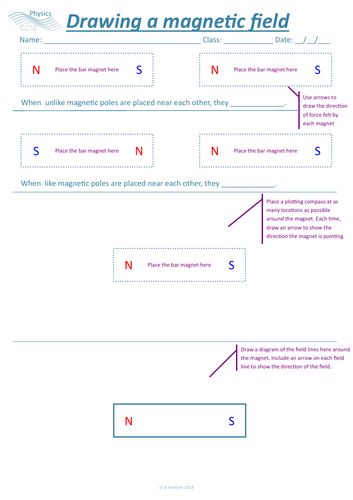

































A fully resourced lesson series designed for the new AQA GCSE Trilogy specification, from an experienced author.
Each lesson includes editable and PDF versions of:
• Power point presentation
• Worksheets with full sets of answers (individually and formatted together as a booklet)
• Technician’s sheet (fully resourced and illustrated)
• A VLE version of the presentation (with the answers removed)
In addition, it includes an optional self-marking Google Classroom Homework for those of you lucky enough to work in a school with Google Classroom set up.
Individual lessons in this topic are also available, as well as the full Triple Physics unit.
The first lesson “Permanent Magnets” is available free of charge so you can try before you buy.
Objectives covered:
Lesson 1: Permanent Magnets
- Describe the attraction and repulsion between unlike and like poles for permanent magnets.
- Describe the difference between permanent and induced magnets.
- Recall where the magnetic forces are strongest in a magnetic field, and if magnetism is a contact or non-contact force.
Lesson 2: Magnetic Fields and Compasses
- Draw the magnetic field pattern of a bar magnet showing how strength and direction change from one point to another.
- Explain how the behaviour of a magnetic compass is related to evidence that the core of the Earth must be magnetic.
Lesson 3: Electromagnetism
- Describe how the magnetic effect of a current can be demonstrated.
- Draw the magnetic field pattern for a straight wire carrying a current and for a solenoid (showing the direction of the field).
- State the relationship between the current and the magnetic field strength.
- Recall how to convert a solenoid into an electromagnet.
- Explain how a solenoid arrangement can increase the magnetic effect of the current and that this produces a uniform magnetic field.
- PHYSICS ONLY: Interpret diagrams of electromagnetic devices in order to explain how they work.
Lesson 4: HIGHER ONLY The Motor Effect
- Recall the factors that affect the size of a force on the conductor perpendicular to a magnetic field.
- Name this as the “Motor Effect”
- Apply Fleming’s left-hand rule to predict the direction of these factors.
- Calculate the magnitude of these factors.
Lesson 5: HIGHER ONLY The Electric Motor
- Explain how the force on a conductor in a magnetic field causes the rotation of the coil in an electric motor.
Something went wrong, please try again later.
Lots of worksheets tech sheets etc. Not quite what I was looking for!
Excellent
Report this resourceto let us know if it violates our terms and conditions.
Our customer service team will review your report and will be in touch.